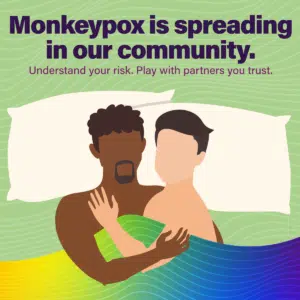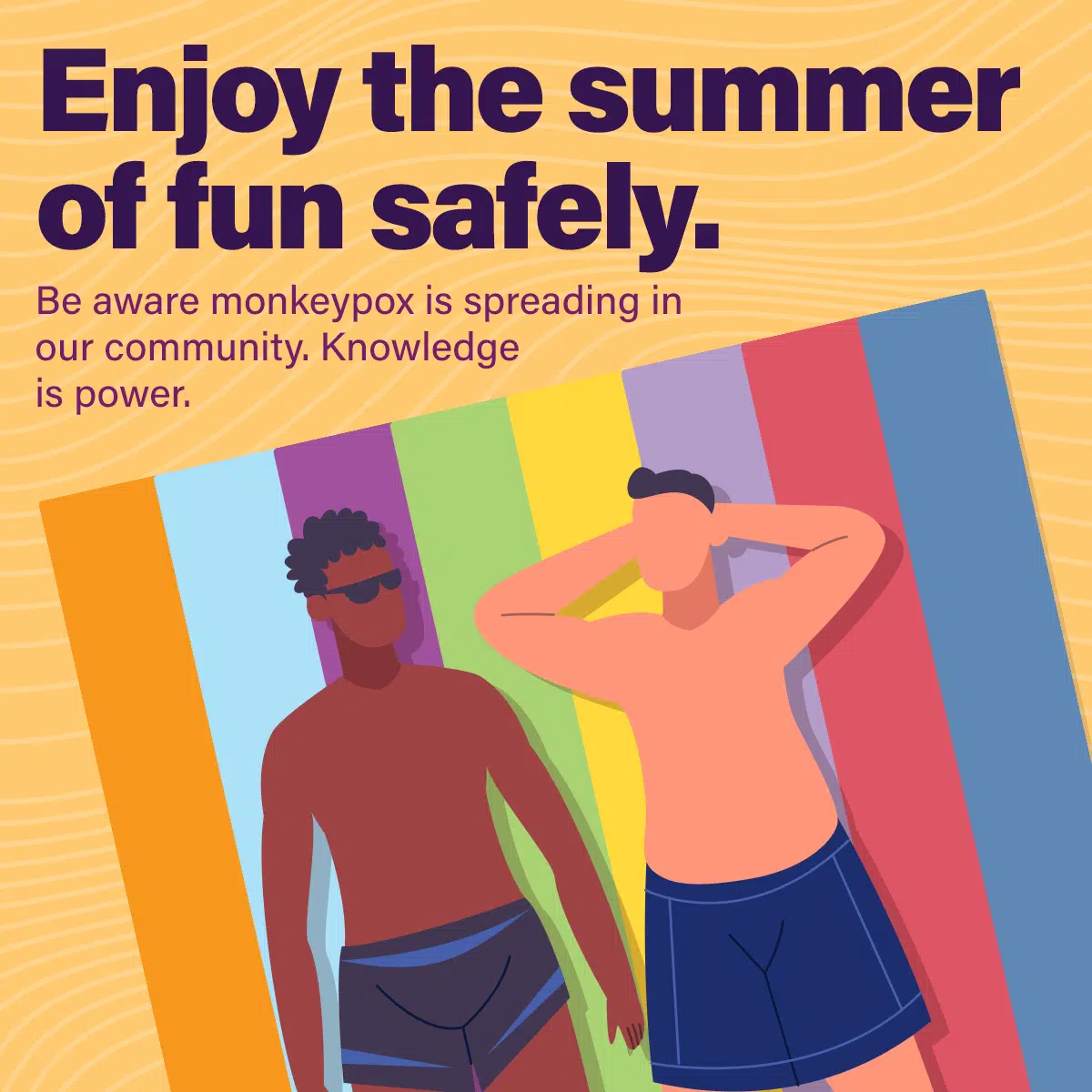
How is monkeypox spread?
Monkeypox can spread to anyone through close, personal, often skin-to-skin contact including:
- Direct contact with monkeypox rash, scabs, or body fluids from a person with monkeypox. We believe this is currently the most common way that monkeypox is spreading in the U.S.
- Touching objects, fabrics (clothing, bedding, or towels), and surfaces that have been used by someone
- with monkeypox.
- Contact with respiratory secretions.
What are the symptoms of monkeypox?
You may experience all or only a few of the symptoms of monkeypox. Most people with monkeypox will get a rash. Some people have developed a rash before (or without) flu-like symptoms. Monkeypox symptoms usually start within 3 weeks of exposure to the virus.
- The flu-like symptoms may include fever, headache, muscle aches and backache, sore throat, cough, swollen lymph nodes, chills, or exhaustion.
- If someone has flu-like symptoms, they will usually develop a rash 1-4 days later.
The rash may be located on or near the genitals or anus but could also be on other areas like the hands, feet, chest, or face.
- The rash will go through several stages, including scabs, before healing.
- The rash can look like pimples or blisters and may be painful or itchy.
- The rash may also be inside the body, including the mouth, vagina, or anus.
For more information about lower your risk of contracting monkeypox, safer sex, and what to do if you have a new of unexplained rash or other symptoms, please click the links below provided by the CDC.


